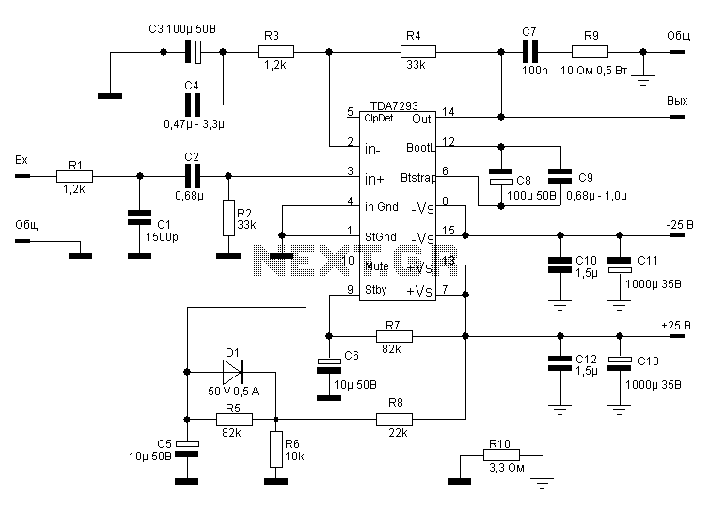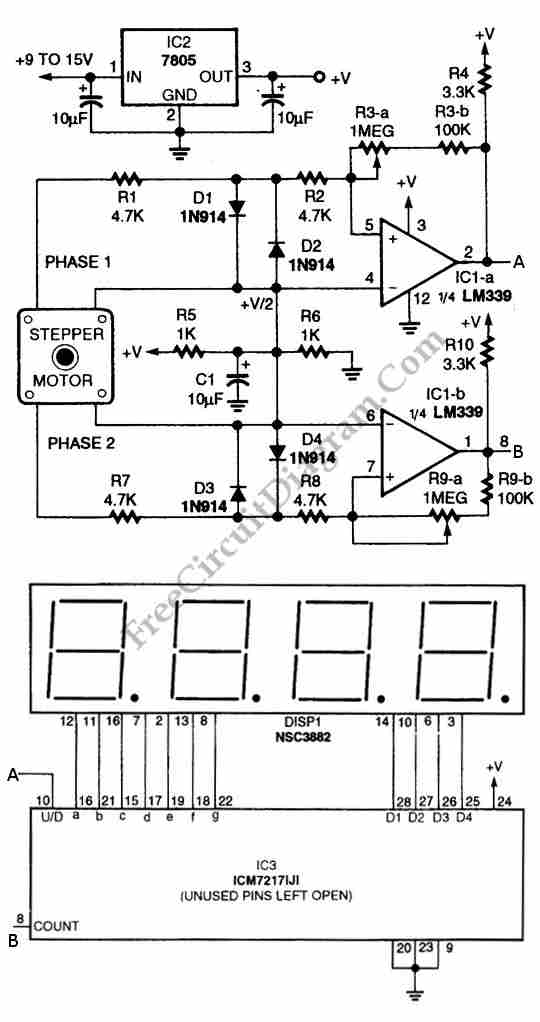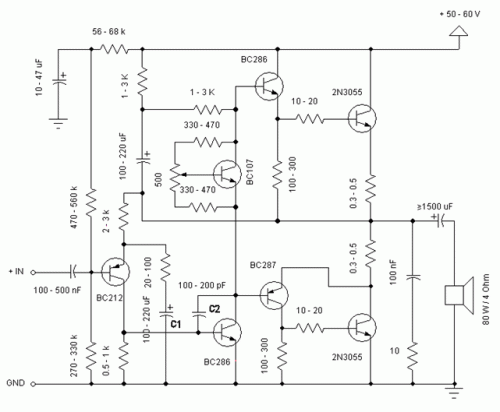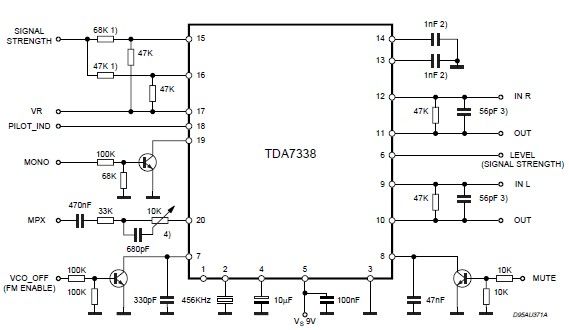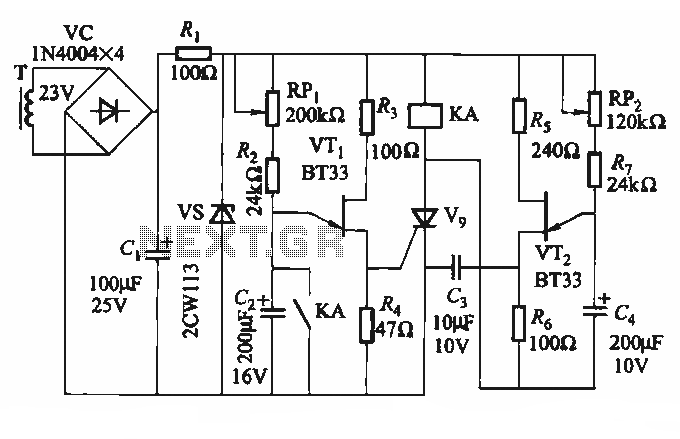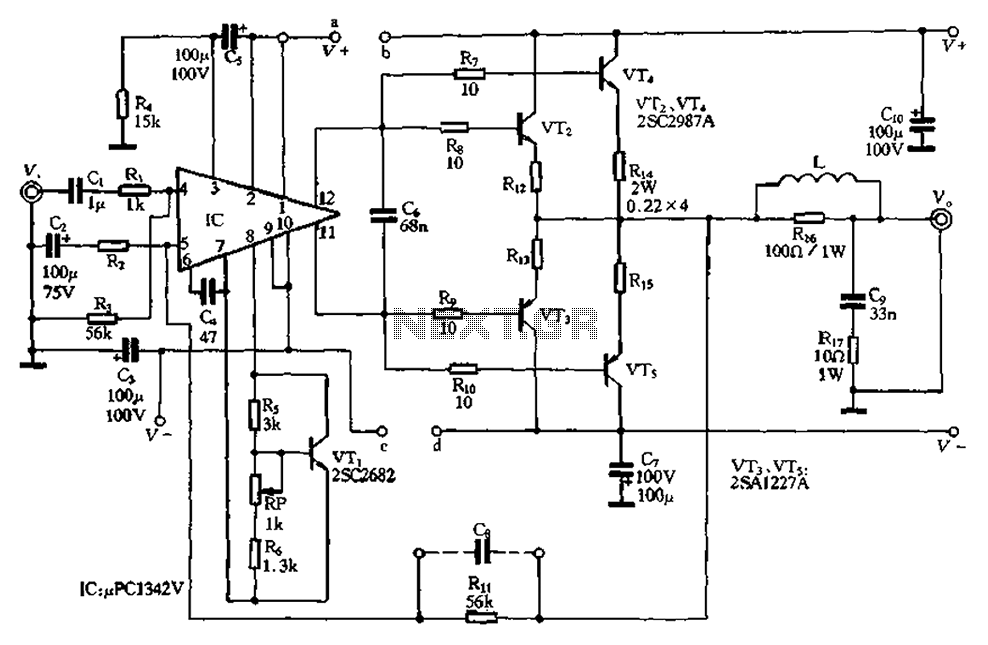
Reference time signal generation circuit 32.768kHz
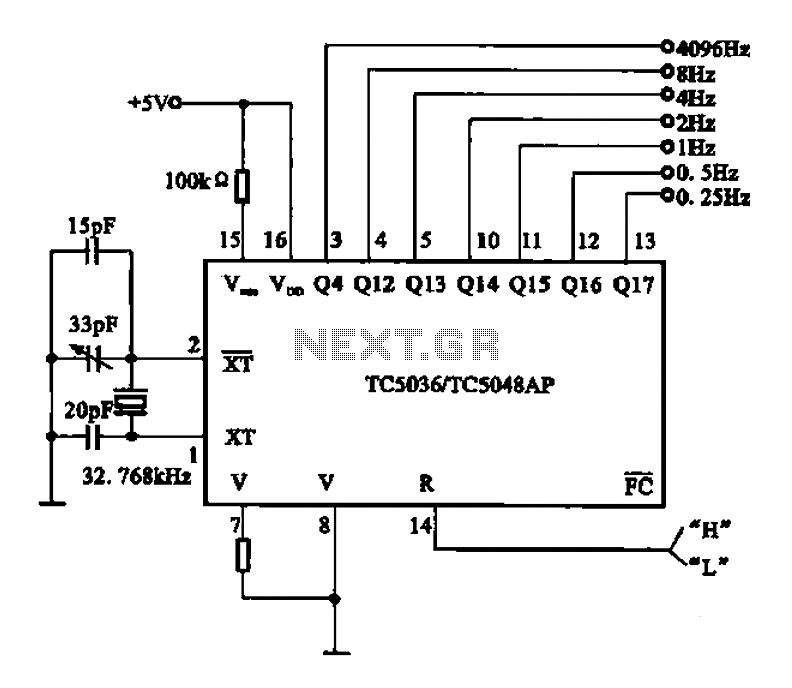
32.768 kHz; In MP3/MP4 devices, mobile phones, laptops, and other digital products, a real-time clock signal generating circuit is utilized, primarily composed of crystal resonators and TC5036/TC5048AP chip oscillators. This setup produces a raw 32.768 kHz crystal oscillator signal, which is further processed by a dividing circuit chip to yield multiple frequency output signals.
The 32.768 kHz frequency is widely employed in various digital devices for real-time clock applications due to its compatibility with standard timekeeping requirements. The circuit typically includes a quartz crystal resonator, which is integral in maintaining the accuracy and stability of the frequency output. The TC5036 and TC5048AP are specialized integrated circuits designed to function as oscillators and frequency dividers.
In the schematic, the crystal resonator is connected to the oscillator chip, where it provides the fundamental frequency. The oscillator circuit generates a stable output signal that is then fed into a frequency divider circuit. This divider reduces the frequency from 32.768 kHz to lower frequencies as required by the system, which can be used for timekeeping functions or other timing-related tasks within the digital product.
The overall design ensures that the generated clock signal is precise and reliable, which is crucial for synchronizing the operations of various components within the device. Additionally, the integration of these components allows for compact circuit designs, making it suitable for portable applications in mobile phones and laptops. The reliability of the 32.768 kHz clock signal is essential for maintaining accurate timekeeping and ensuring proper functionality in digital products.32.768kHz ; In MP3/MP4, mobile phones, laptops and other digital products are provided real-time clock signal generating circuit, which is shown in FIG example, and is mainly c omposed of crystals and TC5036/TC5048AP constituted as a crystal resonator devices and chip oscillator resonant circuit, producing raw 32.768 kHz crystal oscillator signal, after dividing circuit chip by processing multiple frequency output signal.
The 32.768 kHz frequency is widely employed in various digital devices for real-time clock applications due to its compatibility with standard timekeeping requirements. The circuit typically includes a quartz crystal resonator, which is integral in maintaining the accuracy and stability of the frequency output. The TC5036 and TC5048AP are specialized integrated circuits designed to function as oscillators and frequency dividers.
In the schematic, the crystal resonator is connected to the oscillator chip, where it provides the fundamental frequency. The oscillator circuit generates a stable output signal that is then fed into a frequency divider circuit. This divider reduces the frequency from 32.768 kHz to lower frequencies as required by the system, which can be used for timekeeping functions or other timing-related tasks within the digital product.
The overall design ensures that the generated clock signal is precise and reliable, which is crucial for synchronizing the operations of various components within the device. Additionally, the integration of these components allows for compact circuit designs, making it suitable for portable applications in mobile phones and laptops. The reliability of the 32.768 kHz clock signal is essential for maintaining accurate timekeeping and ensuring proper functionality in digital products.32.768kHz ; In MP3/MP4, mobile phones, laptops and other digital products are provided real-time clock signal generating circuit, which is shown in FIG example, and is mainly c omposed of crystals and TC5036/TC5048AP constituted as a crystal resonator devices and chip oscillator resonant circuit, producing raw 32.768 kHz crystal oscillator signal, after dividing circuit chip by processing multiple frequency output signal.
Warning: include(partials/cookie-banner.php): Failed to open stream: Permission denied in /var/www/html/nextgr/view-circuit.php on line 713
Warning: include(): Failed opening 'partials/cookie-banner.php' for inclusion (include_path='.:/usr/share/php') in /var/www/html/nextgr/view-circuit.php on line 713
